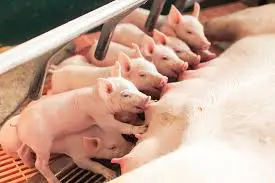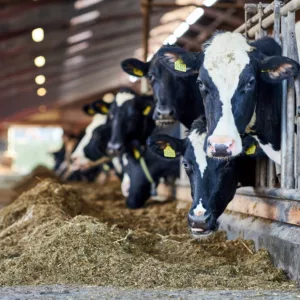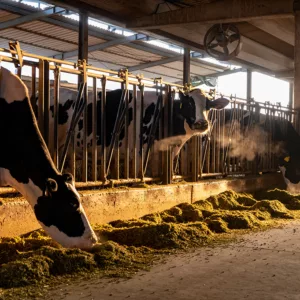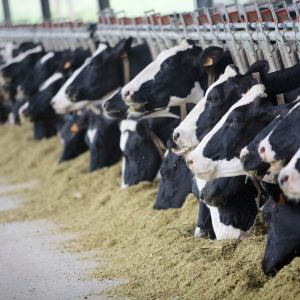The contribution of Stalsoan F toward decreased per-weaning mortality and diarrhea
The vigorous genetic selection for increased litter size has raised pig production to a higher level. The greater number of piglets reduces the cost per housed sow, increasing the system’s profitability. However, prolificacy is also associated with higher pre-weaning mortality rates, one of the most significant challenges for swine producers. As large litters provide substantial challenges for sows and litter management, new technologies are required to reduce pre-weaning mortality.

Pre-weaning mortality
Pre-weaning mortality represents a cost to the swine producer: it is a lost opportunity to profit and is considered a significant economic loss and welfare concern in commercial pig production. Pre-weaning mortality might range between 10% and 20% in pig-producing countries (Muns et al., 2016).
The birth is arguably the most critical event in the piglet’s life. The neonate must cope with a harsh cold environment where they must: learn: pulmonary breathing and compete for food. Indeed, 50-80% of piglet deaths occur during the first week after birth, with the most critical period being the most 72 hours of life (Koketsu et al., 2006). In addition, piglets are also born physiologically and immunologically immature, making them reliant on proper management and optimal sanitary conditions.
Diarrhea
Diseases that affect the suckling piglet are well known to swine producers, especially those that cause diarrhea. Neonatal diarrhea increases morbidity and mortality, resulting in increased pre-weaning mortality, poor growth rates, and variations in weight at weaning.
Diarrhea occurrences result from several factors, including infectious agents, host immunity, and management procedures (Wittum et alk., 1995). When the infection pressure is excessively high or when the immune activity of the suckling piglet is impaired, the risk of outbreaks is considerably higher. Therefore, among the most critical management for control and prevention of diarrhea in suckling piglets are sows’ vaccination before farrowing, proper stimulation of colostrum intake, adequate environmental temperatures for sows and piglets, prevention of heat loss by piglets immediately after birth, and elevated environmental sanitation (Shankar et al., 2009).
Prevention and control of diarrhea using Stalosan F
Any discussion on farrowing room management begins with sanitation and the excellent hygiene of the environment, as most of the infectious agents that cause diarrhea may arise from environmental contamination. In this context, Stalosan F plays a vital role in a farm’s sanitation program. It can be used after disinfection before sow entry to the farrowing house and during the lactation period to prevent bacterial growth and minimize disease challenges.
When applied once a week, Stalosan F maintains a dry environment, reducing the incidence and severity of neonatal diarrhea. In addition, Stalosan F may reduce pre-weaning mortality and increase the performance of piglets during the suckling period. Moreover, Stalosan F can reduce diarrhea in piglets by over 50%, which leads to fewer antibiotic treatments.
Furthermore, Stalosan F provides quick and effective drying when used directly on newborn piglets, protecting them from excessive heat loss that may lead to diarrhea or even death.
Conclusion
It’s nothing new that piglet mortality and diarrhea demand effective strategies to mitigate their effects in commercial facilities. Those strategies involve a multifactorial approach and must be conducted, considering each farm’s particular circumstances However, in all cases, Stalosan F is a decisive contribution to maintaining high environmental sanitation standards and proper early care in farrowing rooms.
References
68.821 Muns, R., Nuntapaitoon, M., Tummaruk, P. Non-infectious causes of pre-weaning mortality in piglets. Livestock Science, v. 184, p. 46-57, 2016. https://doi.org/10.1016/j.livsci
.2015.11.025 Shankar, B. P., Madhusudhan, H.S., Harish. D. B. Pre-weaning mortality in pigs causes and management. Veterinary World, v. 2, p. 234-236. Wittum T. E., Dewey C. E., Hurd H.S., Dargatz D.A., Hill G.W. Herd and litter-level factors associated with the incidence of diarrhea morbidity and mortality in piglets 1-3 days of age. Journal of Swine Health and Production, v. 3, 99-104, 1995.



